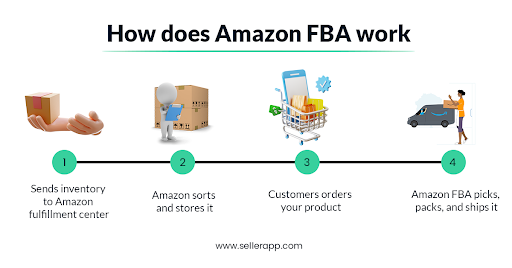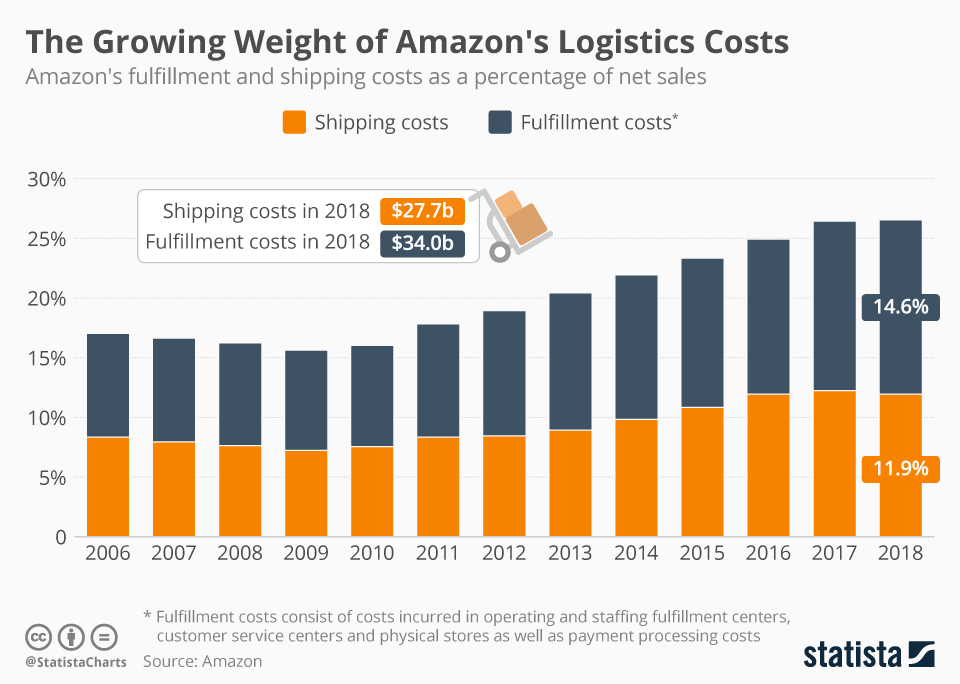Uncover the truth behind Amazon FBA fees in this detailed breakdown – are you paying more than you should be?
Table of Contents
Introduction to Amazon FBA
Have you ever wondered how people sell things on Amazon without having to deal with all the packing and shipping themselves? Well, that’s where Amazon FBA comes in! FBA stands for Fulfillment by Amazon, and it’s a cool way that Amazon helps sellers like you get their products to customers quickly and easily.
What is Amazon FBA?
Amazon FBA is like having your own personal team of helpers at Amazon’s warehouses. You send your products to Amazon, and they take care of storing them, packing them up, and sending them out to customers when someone places an order. This way, you can focus on making more awesome things to sell, while Amazon handles all the nitty-gritty details of getting those items to customers.
Understanding Amazon FBA Fees
Amazon FBA fees are the costs associated with using Amazon’s services to store and ship products on behalf of sellers. These fees cover the expenses incurred by Amazon for providing storage space in their warehouses and handling the packing and delivery of orders to customers.
Types of Amazon FBA Fees
When you sell products using Amazon FBA, there are various fees that you may need to pay. Understanding these fees is essential for sellers to manage their costs effectively. Let’s dive into the different types of fees that Amazon charges.

Image courtesy of fitsmallbusiness.com via Google Images
Monthly Storage Fees
One of the fees you may encounter is monthly storage fees. This fee is for the space your products take up in Amazon’s warehouses every month. The amount you pay depends on the size and weight of your items, as well as the time they spend in storage.
Fulfillment Fees
Another important fee to consider is fulfillment fees. These fees cover the costs associated with Amazon picking, packing, and shipping your products to customers. The size and weight of your items, as well as the shipping destination, can affect the fulfillment fees you pay.
Calculating FBA Fees
When selling products through Amazon FBA, it’s essential to understand the fees involved to ensure you can price your items competitively while still making a profit. One way to do this is by using the Amazon FBA Fee Calculator, a valuable tool that can help you estimate your costs accurately.
Using the Amazon FBA Calculator
The Amazon FBA Calculator allows sellers to input specific details about their products, such as size, weight, and selling price, to calculate the fees associated with using Amazon’s services. By inputting this information, the calculator can provide an estimate of your fulfillment fees, storage fees, and other related costs.
Using this tool can help you determine the overall expenses involved in selling a particular product on Amazon FBA, allowing you to plan your pricing strategy accordingly. By understanding the fees upfront, you can make informed decisions about which products to sell and how to optimize your profits.
Tips for Reducing FBA Fees
When it comes to selling products using Amazon FBA, it’s important to find ways to reduce the fees you have to pay. Here are some tips to help you lower the costs of using Amazon’s services.

Image courtesy of www.sellerapp.com via Google Images
Picking the Right Products
One way to cut down on FBA fees is to choose products that won’t cost a lot to store and send out. Consider selling smaller, lighter items that won’t take up much space in Amazon’s warehouses. This can help you save money on storage fees and fulfillment costs.
Managing Inventory Effectively
Another way to reduce FBA fees is to ensure that you’re managing your inventory efficiently. Keeping just enough stock on hand to meet demand can help prevent you from incurring extra charges for storing excess inventory. By staying on top of your inventory levels and only stocking what you need, you can avoid unnecessary fees.
| Fee Type | Cost |
|---|---|
| Fulfillment Fee | $2.50 – $137.32 |
| Referral Fee | 15% of sale price |
| Closing Fee | $1.80 per item |
| Monthly Storage Fee | $0.75 – $2.40 per cubic foot |
| Long-Term Storage Fee | $6.90 per cubic foot after 6 months |
Additional Costs to Consider
When you keep your items in Amazon’s warehouse for a long time, they might charge you extra money. This is called long-term storage fees. It’s important to keep track of how long your products have been sitting in Amazon’s warehouse so you can avoid this extra cost.
Removal Order Fees
Sometimes, you might want to take back some of your products from Amazon’s warehouse or have them thrown away. In these cases, you may have to pay removal order fees. This is the cost of getting your items back or getting rid of them. Make sure to consider this fee when making decisions about your inventory.
Shipping to Amazon FBA
When sending your products to Amazon’s warehouse, it’s crucial to select the right shipping method. One option that you may come across is ‘rapid express freight’, which can be a fast and efficient way to get your items to Amazon’s location.

Image courtesy of www.statista.com via Google Images
Deciding on the shipping method involves considering factors like the size and weight of your products, as well as the speed at which you want them to reach Amazon. Rapid express freight services are known for their speed and reliability, making them a popular choice for many sellers looking to send their goods to Amazon FBA quickly and securely.
Ensure that you weigh the costs and benefits of different shipping methods to find the best option for your specific needs. By choosing the right shipping method, you can streamline the process of getting your products to Amazon’s warehouse and ultimately save time and money in the long run.
Remember, the shipping method you choose can have an impact on your overall expenses and profits, so it’s essential to make an informed decision based on your budget and requirements.
The Impact of FBA Fees on Profits
When selling products using Amazon FBA, it’s essential to understand how the fees associated with this service can affect your profits. These fees can have a significant impact on the amount of money you make from each sale.
Understanding Your Margins
One crucial factor to consider when evaluating the impact of FBA fees on your profits is your profit margins. Profit margin is the difference between the cost to make or buy a product and the price at which you sell it. For example, if you purchase a product for $10 and sell it for $20, your profit margin is $10.
When you calculate your profit margin, you need to take into account all the fees associated with using Amazon FBA. These fees can include storage fees, fulfillment fees, and other charges. Subtracting these costs from the selling price will give you a more accurate picture of your actual profit margin.
By understanding your profit margins and factoring in FBA fees, you can make informed decisions about pricing your products and ensuring that you are still making a profit after all expenses are considered.
As a seller, it’s crucial to regularly review your profit margins and adjust your pricing strategy to account for any changes in FBA fees. By staying on top of these costs and their impact on your profits, you can optimize your business and maximize your earnings on the Amazon platform.
Frequently Asked Questions
Here are some common questions that people often ask about Amazon FBA fees:

Image courtesy of fourweekmba.com via Google Images
Why are FBA fees different for various products?
Amazon FBA fees can vary based on the size and weight of the items you are selling. Bigger or heavier products may cost more to store in Amazon’s warehouses and to ship out to customers, which can result in higher fees.
Can I change my shipping plan to lower fees?
Yes, you can adjust your shipping plan to potentially lower your Amazon FBA fees. Choosing a different shipping method, such as ‘rapid express freight,’ could impact the cost of sending your products to Amazon’s warehouses, ultimately influencing the fees you incur.
Conclusion
In conclusion, Amazon FBA, or Fulfillment by Amazon, is a service that helps sellers store and ship their products more efficiently. By utilizing Amazon FBA, sellers can take advantage of Amazon’s extensive network of warehouses and shipping capabilities, ultimately allowing them to focus more on growing their business rather than logistical challenges.
We have discussed the importance of understanding Amazon FBA fees and how they can impact a seller’s overall profit margins. By breaking down the various types of fees, such as monthly storage fees and fulfillment fees, sellers can better prepare and plan for the costs associated with using Amazon FBA.
Furthermore, we explored tips for reducing FBA fees, such as selecting the right products to sell and managing inventory effectively. By following these guidelines, sellers can optimize their operations and potentially lower their expenses, thus increasing their bottom line.
It is crucial for sellers to consider additional costs that may arise, such as long-term storage fees and removal order fees, to ensure they have a comprehensive understanding of the potential expenses associated with utilizing Amazon FBA.
Lastly, we discussed the process of shipping products to Amazon FBA and highlighted the importance of selecting the appropriate shipping method, such as rapid express freight, to expedite the delivery of products to Amazon’s warehouses.
Overall, Amazon FBA offers a convenient and efficient way for sellers to scale their businesses and reach a broader customer base. By investing time in understanding and managing FBA fees effectively, sellers can maximize their profits and streamline their operations for long-term success in the e-commerce industry.
